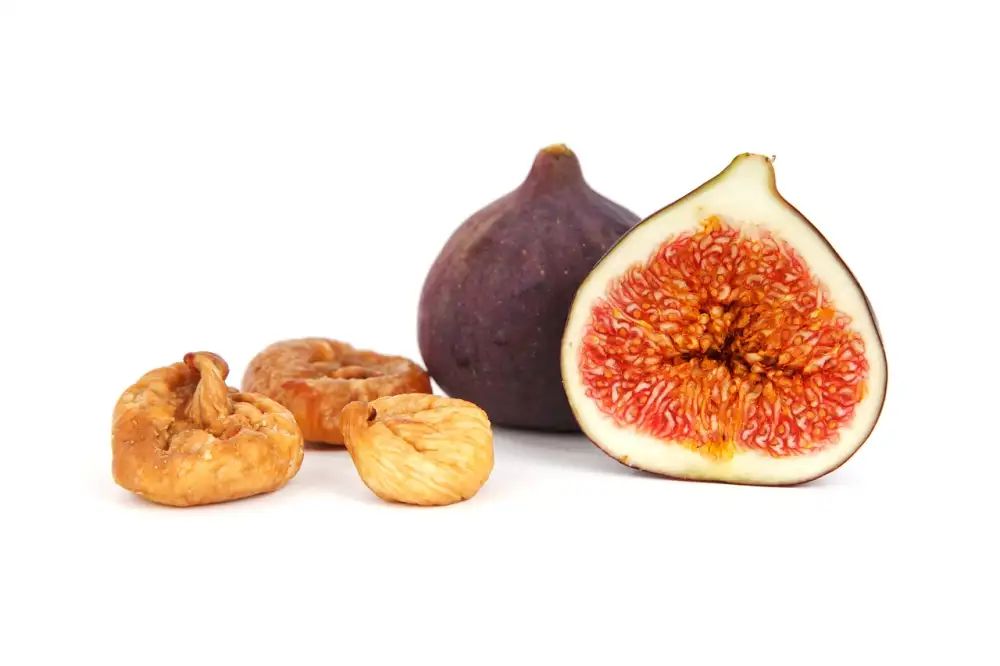Trimming Down Made Easy: Unlock Your Weight Loss Potential with our Cutting Diet Plan PDF

- Understanding the concept of a cutting diet
- Benefits of following a cutting diet plan
- Key principles of a cutting diet plan
- Nutritional guidelines for a cutting diet plan
- Sample meal plan for a cutting diet
- Incorporating exercise into a cutting diet plan
- Tips for successful implementation of a cutting diet plan
- Potential challenges and how to overcome them
Welcome to "Foodie's Playground: Where Every Bite Is a Culinary Discovery"! In this article, we will introduce you to the Cutting Diet Plan PDF, a comprehensive guide designed to help you achieve your weight loss goals. Whether you're looking to shed a few pounds or simply improve your overall health, this cutting-edge diet plan is here to support you every step of the way. With its focus on nutrition and balanced eating, the Cutting Diet Plan PDF offers a sustainable approach to trimming down and unlocking your weight loss potential. Say goodbye to fad diets and hello to a healthier, happier you!
Understanding the concept of a cutting diet
Understanding the concept of a cutting diet is essential for successful weight loss. A cutting diet is a nutrition plan that aims to reduce body fat while preserving muscle mass. It involves creating a calorie deficit by consuming fewer calories than your body needs, which prompts it to use stored fat for energy. This is achieved by carefully controlling macronutrient intake, particularly carbohydrates and fats, while ensuring adequate protein intake to support muscle growth and repair. A cutting diet requires discipline and consistency but can lead to significant fat loss when followed correctly.
Benefits of following a cutting diet plan
Benefits of following a cutting diet plan include:
1. Weight loss: A cutting diet plan promotes calorie deficit, leading to gradual and sustainable weight loss.
2. Preserves muscle mass: By incorporating adequate protein and strength training, a cutting diet helps retain lean muscle while shedding fat.
3. Improved body composition: The combination of reduced body fat and increased muscle definition leads to a more toned and sculpted physique.
4. Enhanced energy levels: A balanced cutting diet ensures sufficient nutrient intake, providing sustained energy throughout the day.
5. Reduced risk of chronic diseases: Losing excess weight through a cutting diet can lower the risk of conditions like heart disease, diabetes, and certain cancers.
6. Increased self-confidence: Achieving weight loss goals can boost self-esteem and improve overall mental well-being.
7. Better food choices: Following a cutting diet encourages mindful eating habits, promoting the consumption of whole, nutrient-dense foods.
8. Long-term healthy lifestyle: Adopting the principles of a cutting diet can lay the foundation for lifelong healthy eating habits and weight management.
Key principles of a cutting diet plan
The key principles of a cutting diet plan revolve around creating a calorie deficit to promote weight loss. This is achieved by consuming fewer calories than your body needs to maintain its current weight. Additionally, the cutting diet emphasizes high protein intake to preserve muscle mass and promote fat loss. It also encourages the consumption of nutrient-dense foods while limiting processed and high-sugar foods. Portion control and regular meal timing are important aspects of this plan, as they help regulate hunger and prevent overeating. Lastly, staying hydrated and incorporating healthy fats into your diet are essential for overall well-being during the cutting phase.
Nutritional guidelines for a cutting diet plan
Nutritional guidelines for a cutting diet plan are essential to ensure effective weight loss. Here are some key principles to follow:
1. Caloric deficit: Create a moderate caloric deficit by consuming fewer calories than your body needs. Aim for a deficit of 500-1000 calories per day.
2. High protein intake: Protein is crucial for muscle maintenance and repair during weight loss. Consume lean sources such as chicken, fish, tofu, and legumes.
3. Moderate carbohydrate intake: Reduce refined carbs and focus on complex carbohydrates like whole grains, fruits, and vegetables. This provides sustained energy while controlling insulin levels.
4. Healthy fats: Include sources of healthy fats like avocados, nuts, seeds, and olive oil in moderation. They provide satiety and support essential bodily functions.
5. Adequate hydration: Drink plenty of water throughout the day to stay hydrated and support metabolism.
6. Fiber-rich foods: Incorporate fiber-rich foods like whole grains, vegetables, and legumes to promote digestion and keep you feeling full.
7. Portion control: Be mindful of portion sizes to avoid overeating. Use smaller plates or food scales to help with portion control.
Remember that individual needs may vary, so consult a healthcare professional or registered dietitian before starting any new diet plan.
Sample meal plan for a cutting diet
Sample Meal Plan for a Cutting Diet:
To help you get started on your cutting diet journey, here is a sample meal plan that incorporates the key principles of this diet:
Breakfast:
- 1 cup of egg whites scrambled with spinach and mushrooms
- 1 slice of whole wheat toast
- 1 small apple
Snack:
- 1 small Greek yogurt with berries
Lunch:
- Grilled chicken breast with mixed greens, cherry tomatoes, and cucumber
- 1 tablespoon of olive oil and balsamic vinegar dressing
Snack:
- 1 ounce of almonds
Dinner:
- Baked salmon fillet with steamed broccoli and quinoa
- Lemon wedges for flavoring
Snack:
- Carrot sticks with hummus
Remember to adjust portion sizes based on your individual needs and consult a nutritionist or dietician for personalized advice. Stay consistent with this meal plan while adhering to the nutritional guidelines mentioned earlier to maximize your weight loss potential.
Incorporating exercise into a cutting diet plan
Incorporating exercise into a cutting diet plan is crucial for maximizing weight loss and achieving optimal results. Regular physical activity not only helps to burn calories but also aids in building lean muscle mass.
To effectively incorporate exercise into your cutting diet plan, focus on a combination of cardiovascular exercises and strength training. Cardiovascular exercises such as running, cycling, or swimming help to increase calorie expenditure and improve overall fitness levels.
Strength training exercises, on the other hand, help to build and maintain muscle mass while increasing metabolism. Incorporate exercises like weightlifting, bodyweight exercises, or resistance training into your routine to promote muscle growth and fat loss.
It is recommended to aim for at least 150 minutes of moderate-intensity aerobic activity or 75 minutes of vigorous-intensity aerobic activity per week. Additionally, include two or more days of strength training exercises targeting major muscle groups.
Remember to start slowly and gradually increase the intensity and duration of your workouts over time. It's important to listen to your body and avoid overexertion or injury. Consulting with a fitness professional can also provide guidance on suitable exercises for your specific needs and goals.
By combining a cutting diet plan with regular exercise, you can enhance fat burning, improve body composition, boost metabolism, and achieve long-term weight loss success.
Tips for successful implementation of a cutting diet plan
1. Set realistic goals: Start by setting achievable weight loss goals that are specific, measurable, attainable, relevant, and time-bound (SMART). This will help you stay motivated and focused.
2. Plan your meals in advance: Take the time to plan your meals for the week ahead. This will ensure that you have healthy options readily available and prevent impulsive food choices.
3. Stay hydrated: Drink plenty of water throughout the day to keep your body hydrated and support proper digestion. Water can also help curb cravings and promote a feeling of fullness.
4. Include protein in every meal: Protein is essential for muscle repair and growth. Incorporate lean sources of protein such as chicken, fish, tofu, or beans into each meal to help maintain muscle mass while losing fat.
5. Prioritize whole foods: Opt for whole foods like fruits, vegetables, whole grains, and lean proteins over processed foods. These provide essential nutrients while keeping calorie intake in check.
6. Practice portion control: Be mindful of portion sizes to avoid overeating. Use smaller plates or measuring cups to ensure appropriate serving sizes.
7. Keep track of your progress: Monitor your food intake and track your progress regularly using a food diary or mobile app. This will help you identify any areas where adjustments may be needed.
8. Seek support: Enlist the support of friends, family members, or join online communities with individuals who share similar goals. Having a support system can provide encouragement during challenging times.
9. Find healthy alternatives: Instead of completely eliminating your favorite treats, look for healthier alternatives that satisfy cravings without derailing your progress. For example, opt for air-popped popcorn instead of chips or dark chocolate instead of milk chocolate.
10. Stay consistent: Consistency is key when following a cutting diet plan. Stick to the plan even on weekends or special occasions to maximize results and avoid setbacks.
By implementing these tips, you can increase your chances of successfully following a cutting diet plan and achieving your weight loss goals. Remember to consult with a healthcare professional or registered dietitian before starting any new diet or exercise regimen.
Potential challenges and how to overcome them
1. Hunger cravings: One of the biggest challenges of a cutting diet is dealing with hunger cravings. To overcome this, it is essential to include high-fiber foods in your meals, such as fruits, vegetables, and whole grains. These foods will keep you feeling full for longer periods and help curb cravings.
2. Social situations: Attending social gatherings or dining out can be challenging when following a cutting diet plan. To overcome this, plan ahead by checking the menu beforehand and selecting healthier options. Additionally, communicate your dietary goals with friends and family so they can support you in making healthier choices.
3. Plateauing weight loss: At times, weight loss may plateau despite following the cutting diet plan diligently. To overcome this challenge, consider adjusting your calorie intake or incorporating different types of exercises into your routine to shock your body and kickstart weight loss again.
4. Lack of motivation: Staying motivated throughout the cutting diet plan can be difficult, especially when progress seems slow. To overcome this challenge, set realistic goals and track your progress regularly. Celebrate small achievements along the way to stay motivated and remind yourself of the benefits you will gain from achieving your weight loss goals.
5. Emotional eating: Emotional eating can sabotage any diet plan. To overcome this challenge, find alternative ways to cope with emotions such as stress or boredom that do not involve food. Engage in activities like exercise, meditation, or hobbies that provide a sense of fulfillment without relying on food for comfort.
By being aware of these potential challenges and having strategies in place to overcome them, you will be better equipped to successfully implement the cutting diet plan and achieve your weight loss goals efficiently.
In conclusion, the Cutting Diet Plan PDF is a powerful tool that can help you achieve your weight loss goals effectively and sustainably. By following the key principles and nutritional guidelines outlined in this plan, you will be able to trim down and unlock your weight loss potential.
The cutting diet plan offers numerous benefits, including increased fat burning, preservation of muscle mass, improved energy levels, and enhanced overall health. It provides a balanced approach to nutrition, ensuring that you consume adequate protein, healthy fats, and complex carbohydrates while reducing calorie intake.
By incorporating exercise into your cutting diet plan, you can further enhance your weight loss results. Exercise not only burns additional calories but also helps build lean muscle mass, which is essential for boosting metabolism and maintaining long-term weight management.
To successfully implement the cutting diet plan, it is important to track your progress regularly and make adjustments as needed. Stay consistent with meal planning and preparation to avoid temptations or unhealthy food choices. Seek support from friends or family members who share similar goals or consider joining a community of like-minded individuals for motivation and accountability.
While challenges may arise during your weight loss journey, such as cravings or social situations that involve indulgent foods, it's crucial to stay committed to your goals. Be prepared by having healthy snacks on hand and finding alternative ways to cope with stress or emotional eating.
In conclusion, the Cutting Diet Plan PDF provides a structured approach to achieving sustainable weight loss. By following its principles and incorporating exercise into your routine, you can unlock your weight loss potential and enjoy the benefits of improved health and well-being. Start today and embark on a journey towards a healthier lifestyle!
Published: 28. 02. 2024
Category: Health



